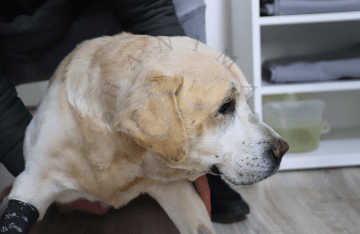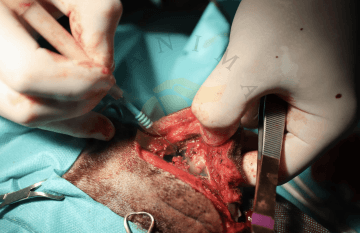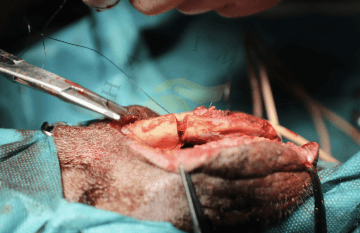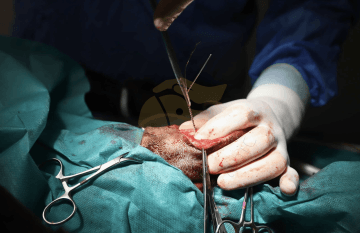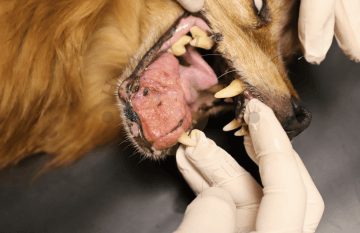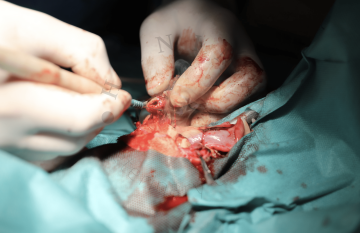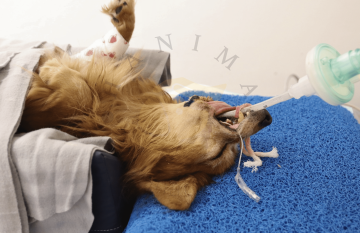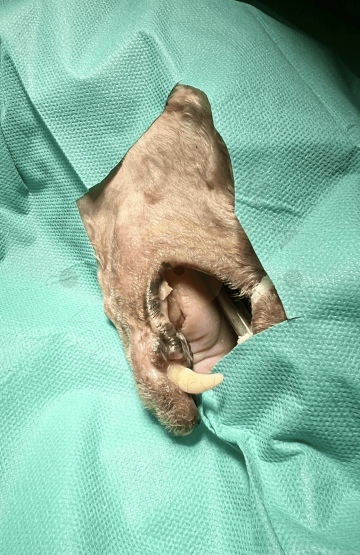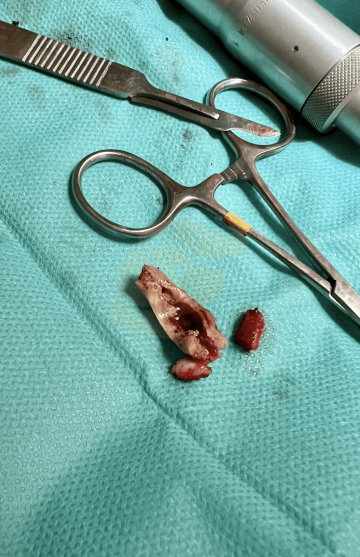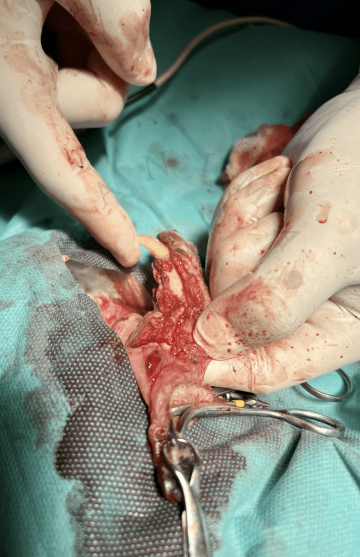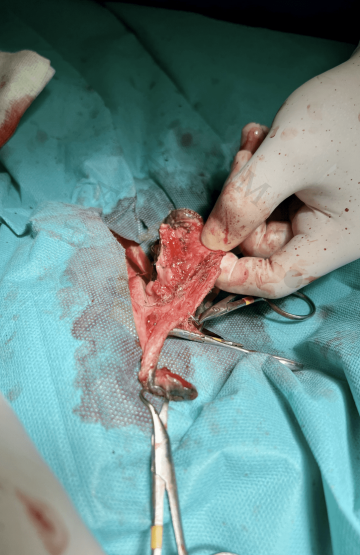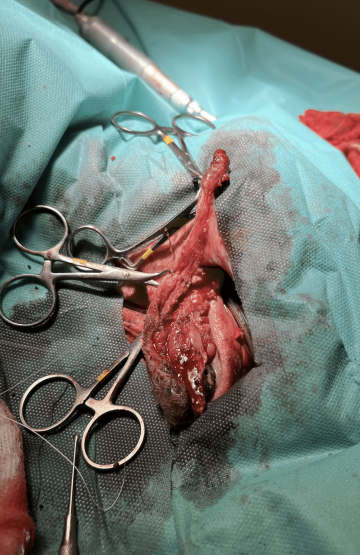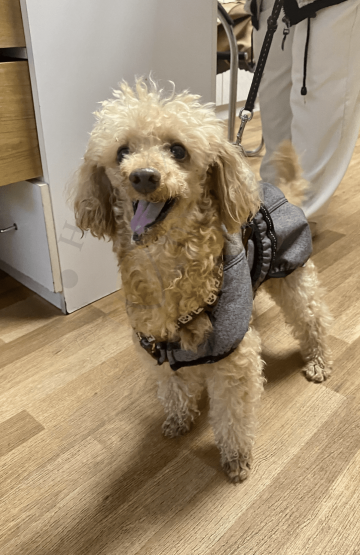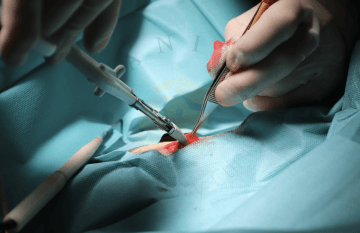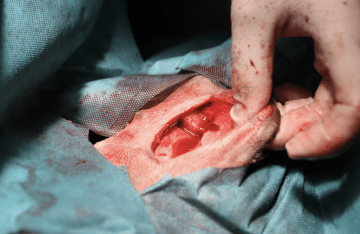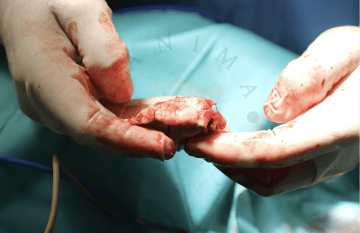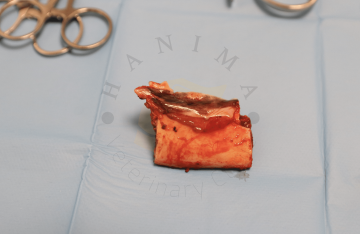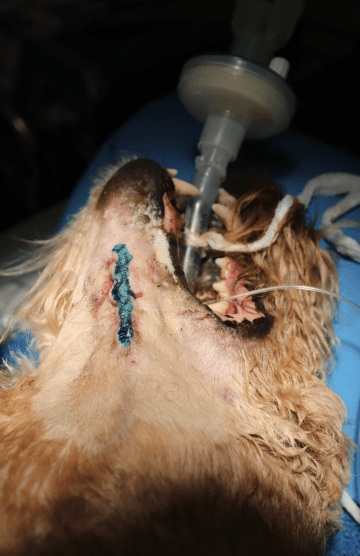Mandibulectomy
Professional Dental Consultation
The first step before any dental procedure with us is always a professional dental consultation, also known as a dental examination. Without this, we are unable to determine the type, extent, or cost of the necessary dental or dental surgical procedure. We strive to approach our clients transparently to ensure that it is entirely clear what needs to be done and how much it will cost.
The price for a professional dental consultation is 940 CZK.
What is mandibulectomy?
The lower jaw bone is called the mandible. When we remove a part from each of them, we add the ending -ectomy, which means to remove. This can involve both sides of the jaw or just one side. Up to three quarters of the entire lower jaw can be removed. The most common reason for jawbone removal is to remove a tumor growing in or on the jaw - originating from bone, gum tissue or tissue surrounding the teeth. Sometimes a mandibulectomy may be chosen as the best option for animals with certain types of jaw fractures, jawbone infections, or fractures that have failed to heal properly. Most animals with oral cavity tumors are older, and some dog breeds are more likely to get certain types of tumors, for example, dogs with black pigment in their mouths have a higher incidence of malignant melanoma. In general, dogs tolerate mandibulectomy better than cats, so most surgeries of this type are performed on dogs.
"Why is this procedure recommended for my pet?"
Tumors that start in or on the jaw are often effectively treated by removing the tumor and the area of normal tissue around the tumor. Animals can compensate for significant jaw loss without being limited in any way. Also, if your pet has a broken part of the jaw, it may be technically and prognostically much easier to remove the broken part (perhaps even with a few teeth).
What to expect from a mandibulectomy?
Mandibular surgery often causes only minor cosmetic changes to your pet's appearance. Dogs have enough loose skin around their mouths to allow for the reconstruction of a defect created when part of the lower jaw is removed. Cats have less loose skin, which makes mandibulectomy in cats more difficult. It is important to remember that animals are not interested in their own cosmetic appearance. They don't look in the mirror to assess their own beauty. Their primary concern is to be free from pain or discomfort associated with oral cancer and to be able to eat, drink and breathe normally.
How does the operation work?
When deciding how to treat a tumor in the mouth, we often need to know what cells it is made of and how these cells are active. This requires a biopsy of a small piece of the tumor, which is sent to a histopathologist for analysis. This information from the biopsy will allow us to get a picture of how the tumor is likely to behave.
The bone is removed using a saw, drill or bone chisel (osteotome). The teeth are usually removed along with the bone. Pain is carefully prevented by the use of strong analgesics. These medications, along with antibiotics, will also be sent home to your pet to ensure your pet is comfortable during the recovery phase. Some animals may need nutritional support in the form of a gastric or esophageal tube. This type of feeding ensures adequate nutrition during the healing of the surgical site.
Jaw surgery will be uncomfortable for your pet for several weeks and he will have to adjust or relearn how to eat. It is common for saliva to be blood-tinged for up to a week.
"Are there situations where the outcome of the operation is not what we hoped?"
The most common disappointment is the return of the tumor. This is more likely to happen with some tumors and in some places where complete removal is difficult to achieve. Another disappointment is relative. It is to be expected that your pet will look different, but the dog or cat practically does not care. Relief from the pain that accompanies a bone-infiltrating tumor or a non-healing fracture is important for animals.
How is my pet's life and lifestyle likely to change?
Yes, lifestyle can change. The larger part of the jaw to be removed, the greater the potential impact. Some patients will need a different way of feeding (bowls, consistency of food, cleaning), some will need a new hygiene routine (cleaning, drying, trimming), some will need toys of a different size or shape. Your lifestyle may also change because of your pet's appearance; most people will be curious and ask "what happened". This is a great opportunity to learn how medicine today can help our pets overcome health challenges.






